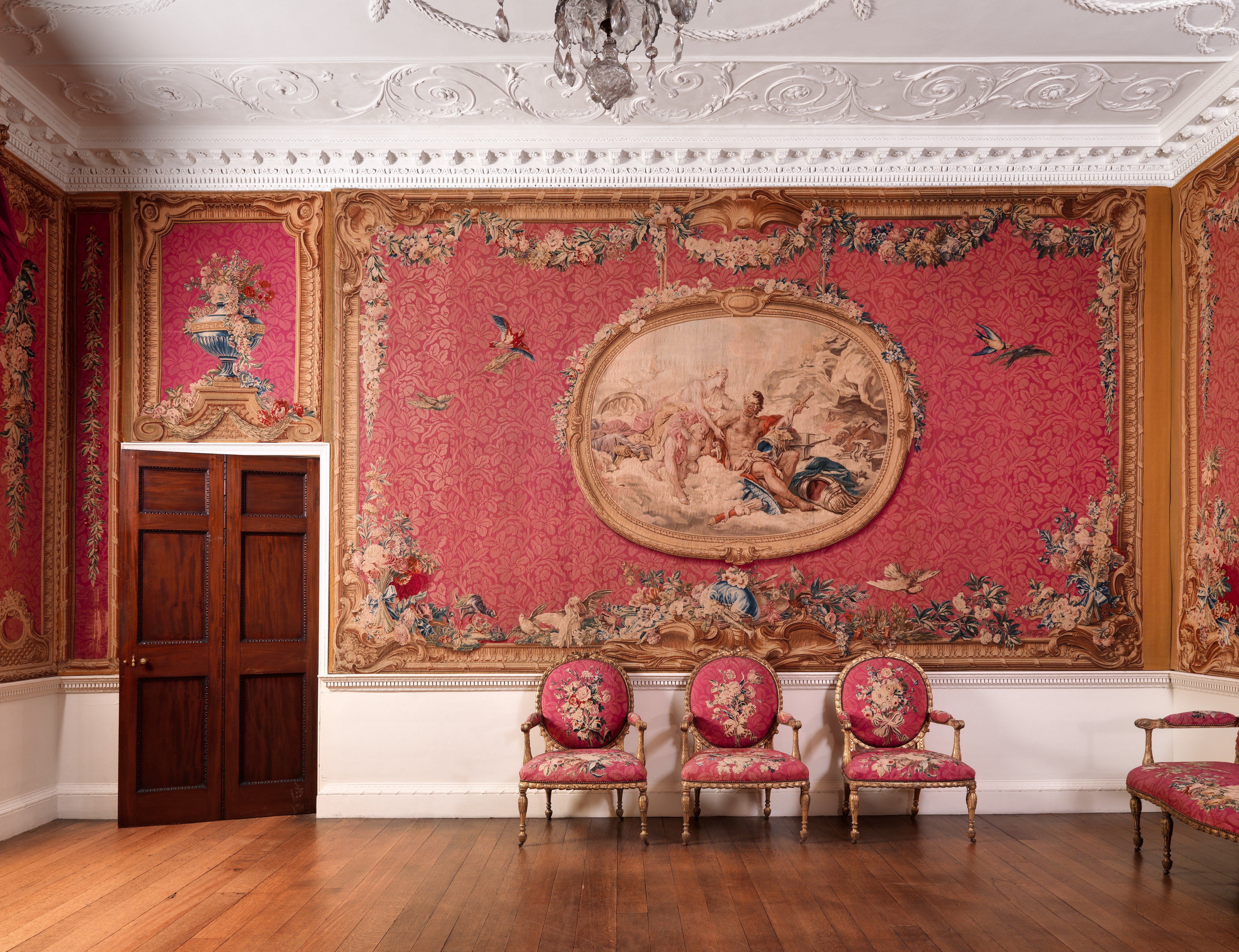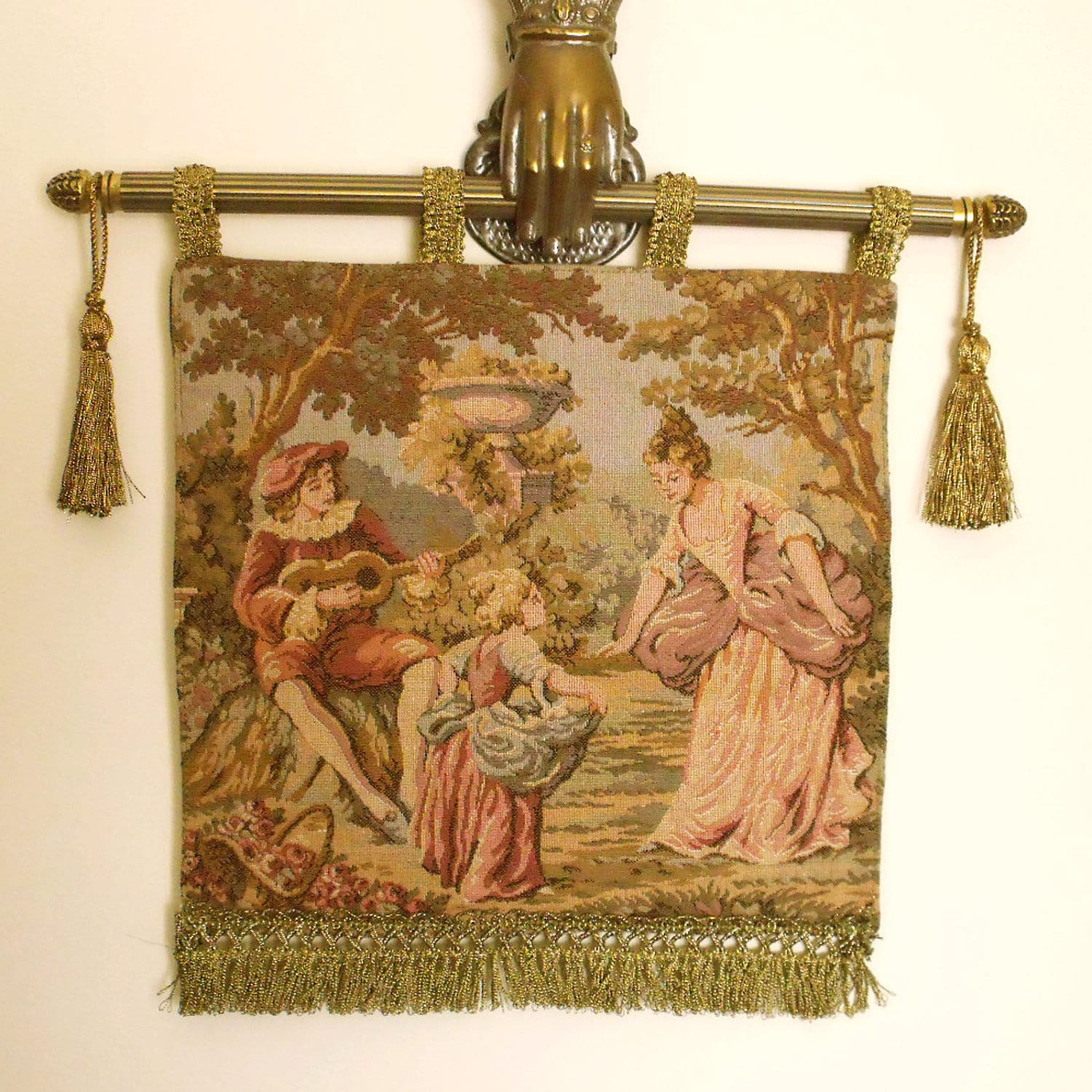
The rich history of French wall art can be traced back centuries, encompassing a wide range of artistic styles and mediums. From the intricate tapestries of the Middle Ages to the avant-garde installations of contemporary artists, French wall art has always been an integral part of the country's cultural heritage. In this article, we will explore the evolution of French wall art, examining the significant styles and artists that have shaped its development over time.
The Medieval Era: Tapestry as a Form of Art

In the Middle Ages, tapestries emerged as one of the most prominent forms of wall art in France. These intricate woven textiles served both decorative and practical purposes, adorning the walls of castles, cathedrals, and noble residences. The Bayeux Tapestry, arguably the most famous example of French medieval tapestry, depicts the events leading up to the Norman conquest of England in 1066. Measuring almost 70 meters in length, it showcases the skill and artistry of the anonymous craftsmen who created it.
- Tapestries were often used to depict biblical scenes, historical events, and mythological stories.
- They were labor-intensive to produce, with multiple weavers working together to create intricate designs.
- The use of vibrant colors and detailed imagery made tapestries highly sought after by the aristocracy.
The Renaissance and the Influence of Italian Art

During the Renaissance, French wall art started to incorporate influences from the Italian art scene. The French court, led by King Francis I, embraced the Italian Renaissance style and commissioned works from notable artists such as Leonardo da Vinci and Raphael. This period marked a shift from tapestry as the primary form of wall art to painting and frescoes.
- French artists began adopting techniques such as perspective, chiaroscuro, and sfumato, popularized by Italian masters like Leonardo da Vinci and Michelangelo.
- The French royal court became a hub for artistic patronage, attracting renowned artists from across Europe.
- Frescoes, large-scale murals painted directly onto walls, gained popularity in churches and palaces, showcasing religious and historical scenes.
The Rococo Period: Ornate Elegance and Decorative Wall Art
The 18th century saw the rise of the Rococo style in France, characterized by its lightness, elegance, and decorative motifs. Wall art during this period embraced a more playful and frivolous aesthetic, often featuring scenes of courtly love, nature, and mythology. Jean-Antoine Watteau, Francois Boucher, and Jean-Honoré Fragonard were among the notable artists associated with the Rococo movement.
- Rococo wall art often incorporated elements such as intricate floral patterns, pastel colors, and delicate brushwork.
- Works were typically commissioned by the aristocracy and adorned the walls of their lavish residences.
- The Rococo style extended beyond paintings and encompassed other decorative arts, including furniture, textiles, and ceramics.
The Impressionist Revolution: A New Approach to Wall Art

In the late 19th century, French art underwent a radical transformation with the emergence of the Impressionist movement. Rejecting the strict academic traditions, Impressionist artists sought to capture the fleeting effects of light and atmosphere in their works. While not primarily focused on wall art, the Impressionists played a significant role in shaping the direction of French art as a whole.
- Artists such as Claude Monet, Pierre-Auguste Renoir, and Edgar Degas experimented with bold brushstrokes and vibrant color palettes, breaking away from the traditional realistic approach.
- Impressionist works often depicted everyday scenes, landscapes, and leisure activities.
- Although initially met with resistance from critics, the Impressionist movement eventually gained widespread recognition and influenced generations of artists.
Modern and Contemporary French Wall Art

In the 20th century, French wall art continued to evolve, reflecting the changing artistic landscape and shifting societal values. From the abstract movements of Cubism and Surrealism to the conceptual installations of the contemporary era, French artists have consistently pushed boundaries and explored new artistic expressions.
- Pablo Picasso, a Spanish artist who spent much of his career in France, played a pivotal role in the development of Cubism. His fragmented and abstracted representations of objects challenged traditional notions of perspective and representation.
- The Surrealist movement, led by artists such as André Breton and Salvador Dalí, embraced the power of the subconscious and aimed to unlock the mysteries of the human mind. Surrealist wall art often featured dreamlike imagery and unexpected juxtapositions.
- In recent decades, French wall art has become increasingly diverse and multidisciplinary. Artists like Sophie Calle, Christian Boltanski, and JR have gained international recognition for their thought-provoking installations, photography, and street art.
The Significance of French Wall Art

French wall art holds immense cultural and historical importance, representing the country's artistic achievements and contributions to the global art scene. It serves as a visual record of different periods in French history and provides insight into the social, political, and cultural contexts of those times.
As an integral part of France's cultural heritage, French wall art continues to inspire and influence artists worldwide. Its rich and diverse legacy serves as a testament to the enduring power of artistic expression and its ability to transcend time and borders.
In conclusion, French wall art has evolved over the centuries, encompassing various styles and mediums. From the tapestries of the medieval era to the contemporary installations of today, French artists have continually pushed the boundaries of artistic expression. Whether it be through intricate woven textiles, grand frescoes, or thought-provoking installations, French wall art has left an indelible mark on the art world. Its diverse and rich history serves as a testament to the enduring power of artistic creativity and innovation.
